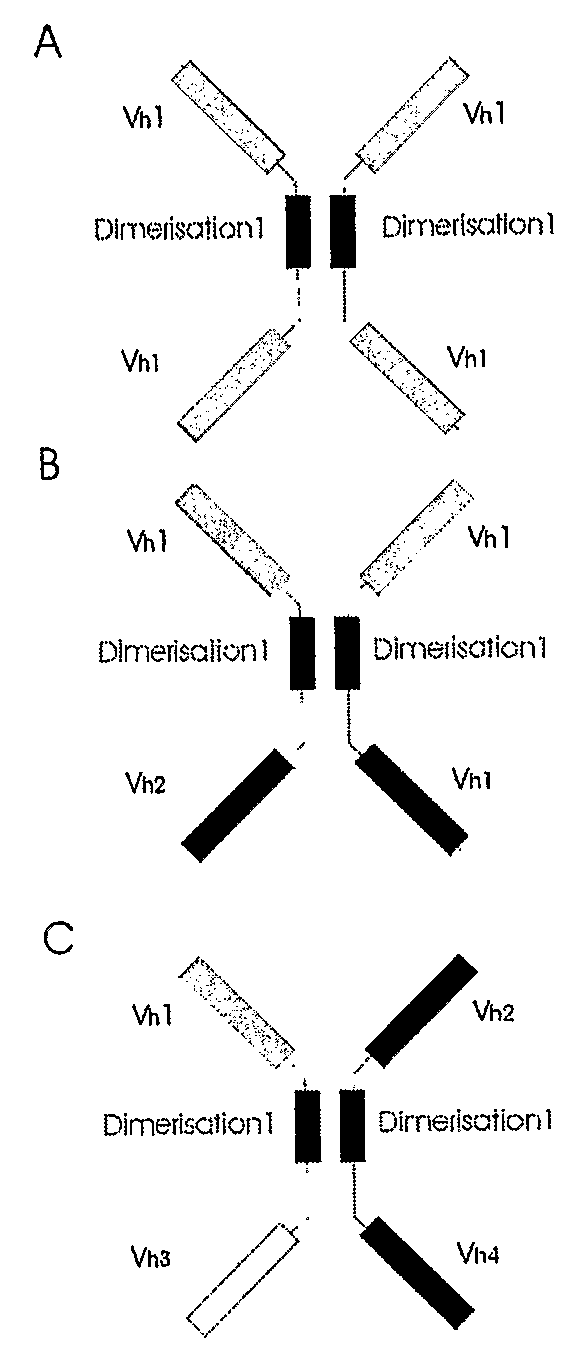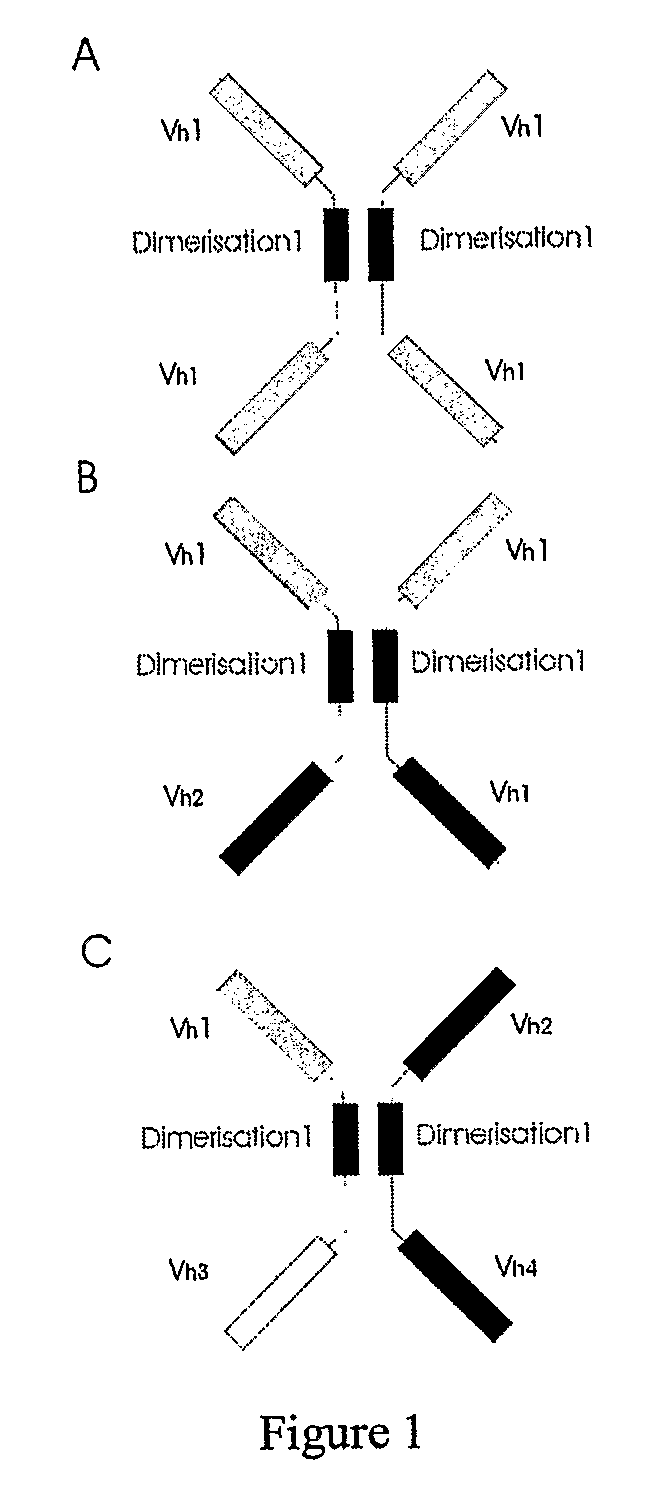Binding molecules
a technology of binding molecules and peptides, applied in the field of polypeptide binding complexes, can solve the problems of low serum stability of products, limited antibody-based therapies, and high production costs and capital costs of antibody manufacturing by mammalian cell culture, and achieve the effect of improving stability in vivo
- Summary
- Abstract
- Description
- Claims
- Application Information
AI Technical Summary
Benefits of technology
Problems solved by technology
Method used
Image
Examples
example 1
Tetravalent Monospecific Anti-aTNF Polypeptide Binding Protein
[0143]The construct was derived from a previously characterised monoclonal antibody producing a heavy chain only IgM in a transgenic mouse challenged with aTNF. The VH domain comprised a camelid V segment and human DJ and constant regions.
[0144]The CH2CH3 backbone of the antibody was deleted and replaced by the CH1 immunoglobulin heavy chain domain and by the immunoglobulin light chain constant region. The VH domain was then duplicated and cloned at the carboxyl terminal end of each construct using a modified hinge region. This hinge was similar to the existing IgG2 hinge sequence but was altered by replacing the cysteines with prolines to prevent crosslinking of the cysteines in the antibody dimer and providing extra flexibility via the prolines to prevent the second antibody being spatially constrained, which otherwise may have inhibited its function.
[0145]Thus formation of the sulphide bridges normally present in the h...
example 2
A Bi-Specific Bi-Valent Polypeptide Binding Complex Comprising VH Binding Domains and a CH2CH3 Dimerisation Domain Lacking Heavy Chain Effector Functions Derived from IgG4
[0149]The experiment was carried out using a camelised human VH domains raised against E. coli HSP70 protein at the amino terminus of the dimerisation domain, and a llama VHH domain raised against the PERV gag antigen (Dekker et al., (2003) J. Virol. 77, (22) 12132-9) at the carboxyl terminus. Experimental detail is as described in Example 2 FIGS. 22, 23 and 24 of PCT / GB2005 / 002892) except that the IgG2 CH2-CH3 dimerisation domain was replaced by a human IgG4 CH2-CH3 dimerisation domain (Bruggemann, M. et al. (1987) J. Ex. Med., 166, 1351-1361.
[0150]The vector comprising polypeptide binding complex was expressed in CHO cells, and the secreted polypeptide binding complex shown by western blotting to bind both HSP70 and gag antigens.
examples 3-5
[0151]Instead of using immunoglobulin constant regions other dimerisation domains can be used to generate multivalent multispecific bonding molecules, for example the leucine zipper domains of the jun and fos genes in combination with different (human) VH domains. The jun zipper domain can heterodimerise with the fos zipper domain, but it can also homodimerise. The following two examples describe the hetero- and homodimerisation using these zipper domains. The last example describes the use of other domains.
PUM
| Property | Measurement | Unit |
|---|---|---|
| molecular weight | aaaaa | aaaaa |
| size | aaaaa | aaaaa |
| flexible | aaaaa | aaaaa |
Abstract
Description
Claims
Application Information
 Login to View More
Login to View More - R&D
- Intellectual Property
- Life Sciences
- Materials
- Tech Scout
- Unparalleled Data Quality
- Higher Quality Content
- 60% Fewer Hallucinations
Browse by: Latest US Patents, China's latest patents, Technical Efficacy Thesaurus, Application Domain, Technology Topic, Popular Technical Reports.
© 2025 PatSnap. All rights reserved.Legal|Privacy policy|Modern Slavery Act Transparency Statement|Sitemap|About US| Contact US: help@patsnap.com



